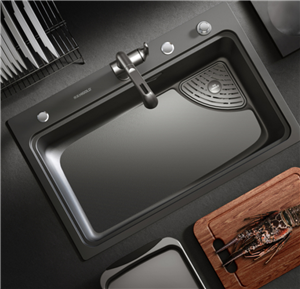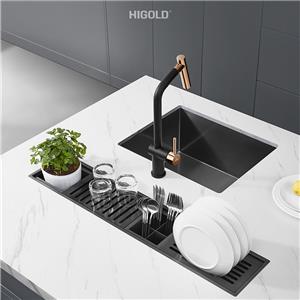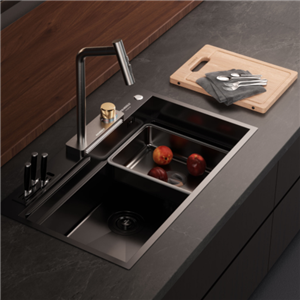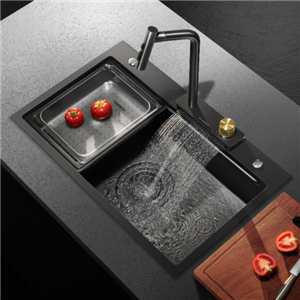Why is my stainless steel sink not shiny?
Stainless steel sink, as one of the most common kitchen accessories in modern kitchens, is widely loved by consumers for its durability, corrosion resistance and easy cleaning. However, many people find that despite repeated cleaning and maintenance of their stainless steel kitchen sink, the surface of the sink still cannot be restored to its original shiny state. This not only affects the beauty of the kitchen, but may also cause trouble to the user. So, why is the stainless steel sink in the kitchen not shiny?
This article will explore this issue in detail, from the material characteristics of the sink, common influencing factors, cleaning and maintenance misunderstandings and other angles, in-depth analysis of the reasons for the loss of luster of the stainless steel sink, and provide effective solutions.
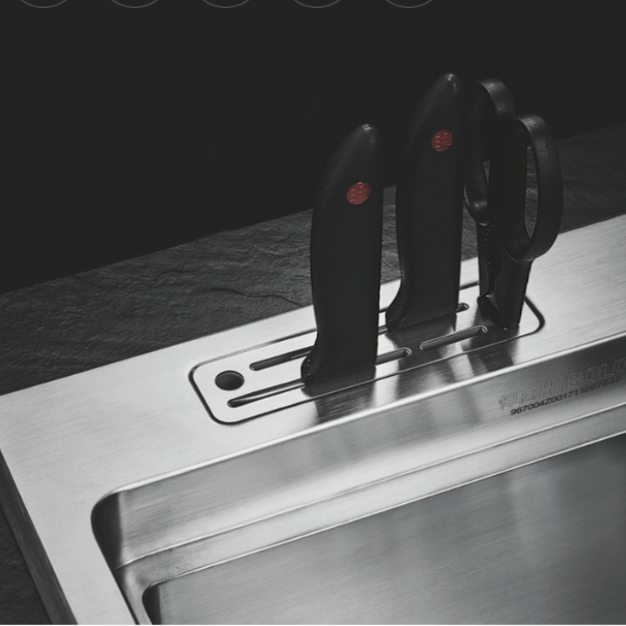
What does the gloss of a stainless steel sink depend on?
The gloss of a stainless steel sink mainly depends on its surface treatment process. Generally speaking, stainless steel sinks are made of stainless steel materials (usually 304 stainless steel or 316 stainless steel), which are ideal for kitchen sinks because of their corrosion resistance, oxidation resistance and high temperature tolerance. For the surface of the sink, common surface treatment processes for stainless steel include:
● Brushed treatment: Brushed treatment is a mechanical grinding process that creates a delicate texture effect on the surface of stainless steel, giving it a unique silky texture. Brushed stainless steel sinks usually have strong scratch resistance, but their glossiness is lower than that of mirror stainless steel surfaces.
● Mirror polishing: Mirror polishing is a process of grinding and polishing to achieve a high gloss effect on the surface of stainless steel. This surface-treated stainless steel sink is very bright, and the surface is smoother and can reflect light. But because of this, it is more likely to leave water marks and fingerprints.
● Frosted treatment: The surface of the frosted stainless steel kitchen sink presents a softer gloss and a low-key texture, but it has a strong anti-fouling ability and is not easy to leave marks.
● Sandblasting: The surface of the sandblasted stainless steel sink is rougher, but it has good wear resistance and is suitable for high-intensity use environments in the kitchen.
The surface process of the stainless steel sink plays an important role in the appearance and user experience of the sink. However, glossiness is not only determined by the surface process, but also closely related to many factors such as the use environment, cleaning method, maintenance, etc.

What are the reasons that affect the gloss of stainless steel sinks?
1. Accumulation of scale and water stains
The water quality of the kitchen water source usually contains certain minerals, especially in hard water areas. These minerals (such as calcium and magnesium) will react with the surface of the sink to form scale. When there is scale on the surface of the stainless steel kitchen sink, the gloss of the sink will be greatly reduced, appearing dull and difficult to clean. Especially when water droplets stay on the surface of the sink for a period of time, the water evaporates and the scale left behind is difficult to remove.
● Solution: Use a descaling cleaner to clean the sink regularly, especially for hard water areas. You can choose a special scale remover to remove the scale accumulated on the stainless steel kitchen sink. In addition, keeping the sink dry and avoiding water stains from staying on the surface for a long time is also an effective way to reduce scale accumulation.
2. Accumulation of grease and stains
Grease and stains are another major reason for the decline in the gloss of stainless steel kitchen sinks. During cooking, grease and food residue may adhere to the surface of the sink. If it is not cleaned for a long time, a layer of oil film will form on the surface, affecting the reflective effect of the sink. Even if the surface of the sink is cleaned, oil may still be embedded in the tiny surface pores, causing the stainless steel kitchen sink to lose its luster.
● Solution: Clean the sink every day, especially after cooking, and try to avoid oil stains, sauces, etc. adhering to the surface of the sink. Use a mild detergent (such as a neutral detergent or a special stainless steel cleaner) to clean the sink, and wipe it dry with a dry cloth to avoid water stains on the surface.
3. Using improper cleaning tools
The surface of the stainless steel sink is relatively sensitive. Using inappropriate cleaning tools will cause scratches and damage to the surface of the sink, which will not only affect the gloss, but also make it easier for dirt to accumulate. Some people may use hard cleaning tools such as steel wool and rough brushes to clean the surface of the stainless steel kitchen sink, which will scratch the sink, causing the surface to lose its smoothness and form permanent scratches.
● Solution: Avoid using hard cleaning tools such as steel wool and sandpaper, and choose soft sponges or cloths for cleaning. For stubborn stains, you can use a special stainless steel cleaner and wipe it with a soft cloth.
4. Excessive use of chemical cleaners
Some strong acid or alkaline cleaners may corrode the surface of the stainless steel sink, causing the sink surface to lose its luster or even spots. Long-term use of these inappropriate cleaners may make the sink surface even duller.
● Solution: Use a neutral cleaner or a cleaner designed for stainless steel sinks. Avoid using cleaning products containing chlorine, strong acids or strong alkalis, as these chemicals will destroy the protective film on the stainless steel surface.
5. Prolonged contact with food and beverages
Some foods and drinks (such as coffee, red wine, soy sauce, etc.) may form stains on the stainless steel kitchen sink if left on the surface for a long time, affecting its gloss. In particular, some foods containing pigments may cause permanent pigment deposition if not cleaned in time.
● Solution: Avoid prolonged contact of food and drinks with the sink surface, and try to clean it in time. For stains that have left pigments, you can use a special cleaner or a mixture of white vinegar and baking soda.
6. Sink aging
As the use time increases, the surface of the stainless steel kitchen sink may show some natural aging. Although the stainless steel material itself has high durability, the sink surface may gradually lose its original gloss during long-term use, especially in a kitchen environment with high frequency of use.
● Solution: Regular deep cleaning and maintenance to prevent the sink from losing its gloss due to aging. Some of the gloss can be restored by using a stainless steel restorer.

How to restore the gloss of a stainless steel sink?
1. Use stainless steel cleaners
There are many stainless steel-specific cleaners on the market. These products can effectively remove stains, grease and scale on the surface of the sink and restore the gloss. When using, spray evenly on the sink surface according to the product instructions, let it stand for a few minutes, and then wipe it clean.
2. Clean with white vinegar and baking soda
White vinegar and baking soda are very effective natural cleaners that can remove scale, stains and grease from the surface of the stainless steel kitchen sink. Spray white vinegar on the surface of the sink, sprinkle an appropriate amount of baking soda, then gently wipe with a cloth, and finally rinse with clean water. This method can remove stains and restore the gloss of the sink.
3. Use stainless steel care agent
After cleaning, use stainless steel care agent for maintenance, which can help form a protective film on the surface of the sink to prevent the accumulation of stains and scale, thereby maintaining the gloss of the stainless steel kitchen sink. The care agent can also enhance the anti-scratch ability of the sink.
4. Clean and dry the sink regularly
When cleaning the stainless steel sink, be sure to dry the sink in time to avoid the accumulation of water stains and scale. You can use a soft dry cloth to wipe it dry, keep the surface of the sink dry and clean, and avoid water stains for a long time.
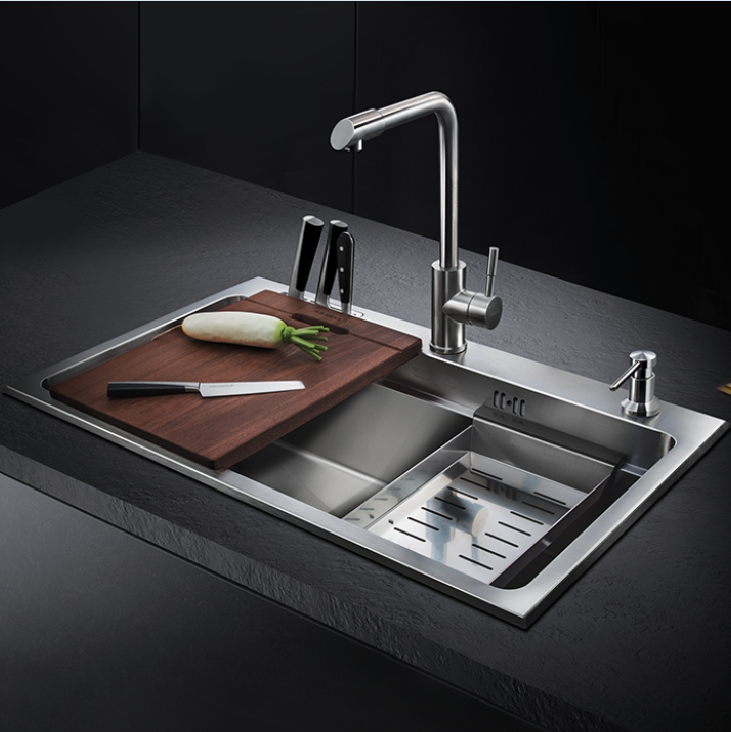
Customized stainless steel kitchen sinks for Your Business
Higold Group specializes in manufacturing customized stainless steel kitchen sinks and faucets. Whether you need a specific design or tailored solutions, our team is ready to meet your needs. With a production capacity of over 50,000 units per month, we can handle bulk orders efficiently. We also offer competitive prices and discounts for wholesale orders. Reach out to us today for personalized quotes and take advantage of our high-quality products and services!

